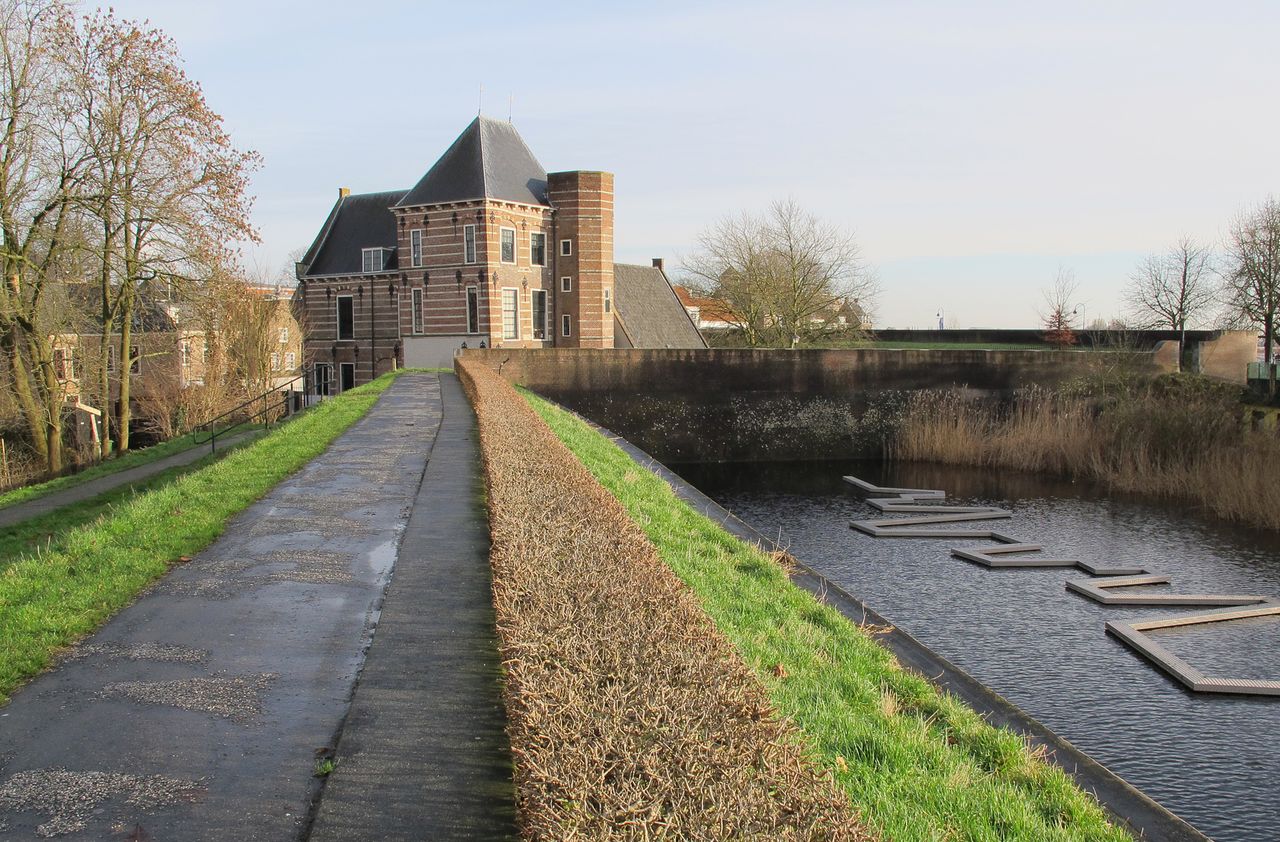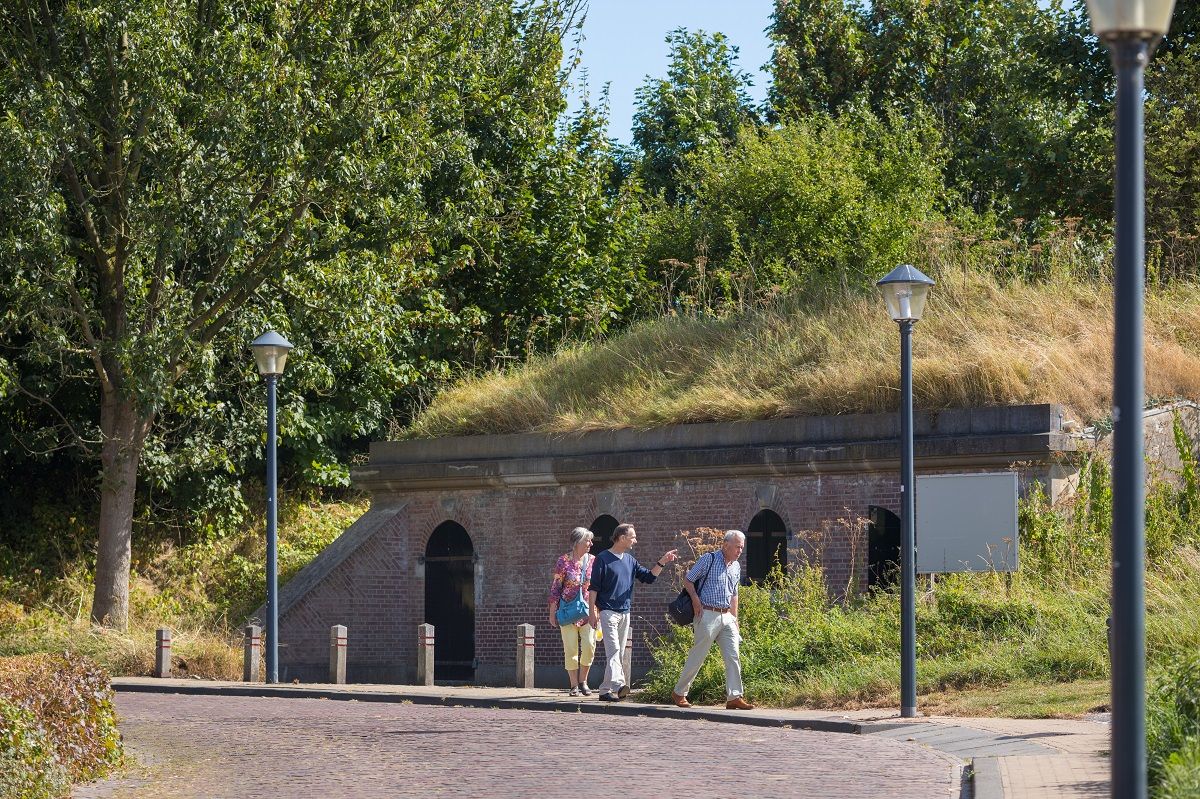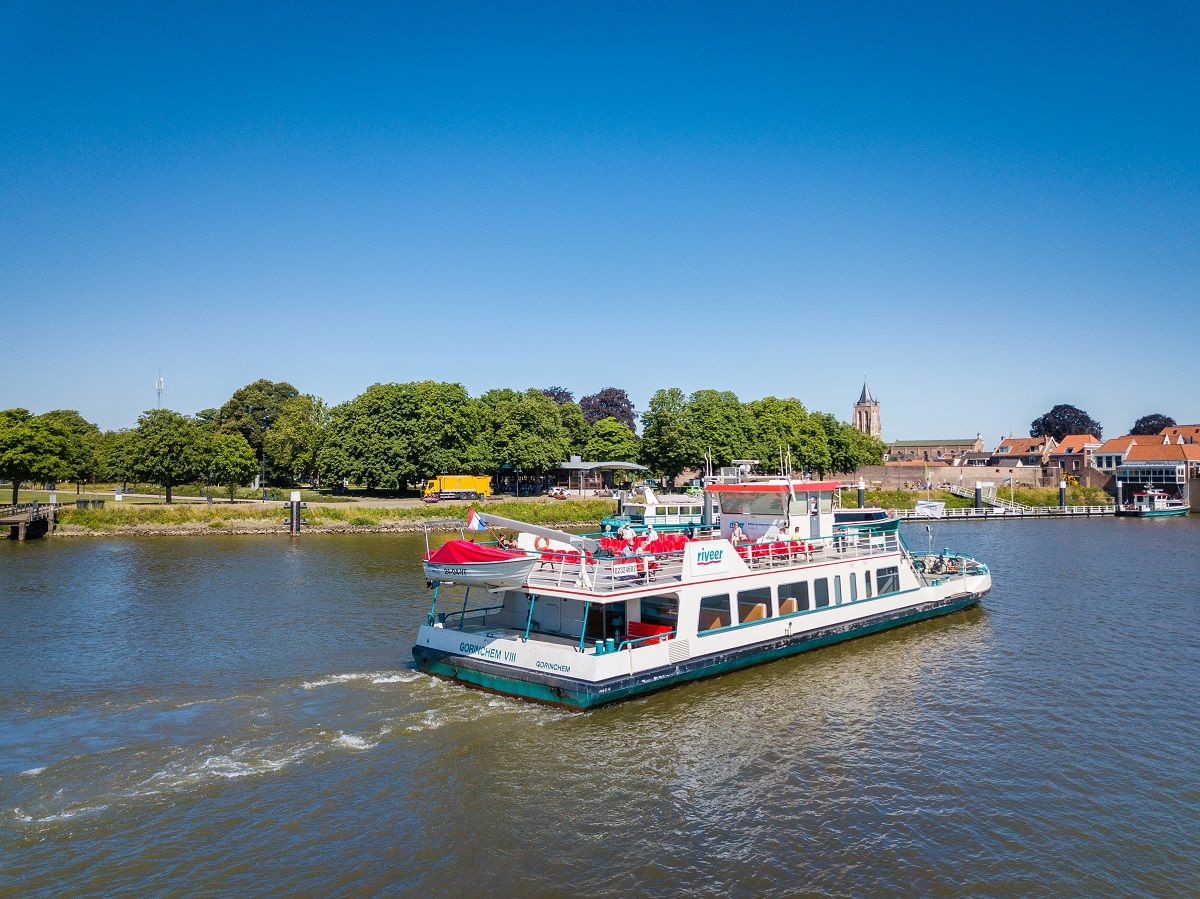11x the greatest fortress city in the Netherlands
The Netherlands boasts dozens of towns, cities and fortresses dating back to the middle ages where you can still see remnants of the past. Most of the fortified towns did not escape the 19th-century push for progress, when fortifications were demolished to make way for industry, housing or public gardens. The fortress city of Gorinchem has been preserved, however, and is now the largest fortress city in the Netherlands where the defensive structures are still fully intact. Many of these fortification buildings and structures have been refurbished and these days serve a contemporary purpose which local residents and visitors alike can enjoy. Below you can read about 11 features of the city that make Gorinchem not only the largest, but also the most enjoyable fortress city in the Netherlands.
Strolling over the rampart with spectacular views
The fortifications in Gorinchem have remained completely intact. The rampart that still completely surrounds the city has a pedestrian path that allows you to stroll over the full length and take in the spectacular views of the river. You won’t find that anywhere else in the Netherlands. And now you can also stroll along the bottom of the east wall, giving you a totally different view of the high ramparts and defence structures.

Dalempoort: an original city gate
Dalempoort is the last of the city gates still standing (on location). The medieval town had four of these gates. The Kanselpoort, Arkelpoort and Waterpoort gates were later replaced with coupures, that’s to say wide openings in the rampart. The Waterpoort gate has also been preserved, though it is now located in the garden of the Rijksmuseum in Amsterdam. Unfortunately, you cannot visit the inside of the Dalempoort gatehouse (people actually live there!) but you can walk through the gate opening to the riverside.

Hoofdwacht guard post on a pleasant café terrace square
There were several guard posts in the fortress, but the Hoofdwacht guard post from 1792 was the most important. This central post on Grote Markt housed the officers and, allegedly, Napoleon during a working visit. These days, however, Hoofdwacht is a restaurant on a pleasant square with many café terraces in the middle of the fortress.

La Caponnière wine and tasting room
Dating from 1893, the caponier (covered passage across a ditch around a fortress) was the last addition to the original fortress. Today, this originally chilly and damp shellproof gun emplacement is a cozy wine tasting room. In the winter you can warm yourself comfortably by the wood-burning stove while enjoying a glass of fine wine, port, local beer or hot chocolate.

Tolhuis (tollhouse)
Dating from 1598, the tollhouse rises above the fortress, and with good reason: all passing ships had to pay the toll here. It was with this in mind that the tollhouse was built to provide a great view over the river. And you can enjoy this fantastic view too: the upper floor has been converted into a ‘Monument en Bed’, a luxuriously furnished guest accommodation in a heritage building.

Kruitmagazijnen (gunpowder magazines)
No fortress would be complete without gunpowder, and that of course had to be stored somewhere, and safely. Like all other fortresses, Gorinchem, too, had many ‘gunpowder magazines’ (reinforced storehouses for explosives), large and small. Two of the large magazines on the Dalemwal rampart are still in use today. However, instead of gunpowder, you can now see modern artworks, photos, jewellery, textiles, glass creations and ceramics. And there is no entry fee to see the fascinating exhibitions of the works by professional artists.

De Hoop flour mill
Medieval towns had to be self-sufficient. Given that the potato had not yet arrived from South America, the staple food was bread. Bread needs flour, and Gorinchem had several flour mills to provide this to the local bakers. Two of these remain standing on the ramparts: De Hoop and Nooit Volmaakt. De Hoop is open every weekend. You can climb the wooden steps to the top to see how the mill operates, with the bonus of a spectacular view over the river. The miller loves to welcome guests.

Nooit Volmaakt flour mill with shop
This flour mill is open to visitors on Wednesday and Saturday. In the shop at the base of the mill you can purchase artisan breads, biscuits, local products and, of course, flour milled right on location. Perfect for making pancakes or for baking homemade bread or biscuits.

Grote Toren (tower) with spectacular view
Grote Toren (grand tower), the highest structure in the fortress, can be seen from far and wide, but the most spectacular view is from the top. This view makes climbing the 256 steps to the top, though exhaustive, a worthwhile endeavour. On a really clear day you can see the Dom Cathedral in Utrecht and the Rotterdam skyline. Fortunately, you don’t have to make the entire climb in one go: you get two breaks on the way up while the guide tells you all about the mill.

Langendijk: for an enjoyable shopping experience
One of the oldest streets in Gorinchem is Langendijk. For centuries, this narrow street was the main street of the fortress, with a coming and going of people, carts, animals and later even cars that took the ferry across the river. Nowadays the street is lined with plenty of trendy shops and concept stores. Many buildings still have their original facades and exteriors, and the mix of old and new makes this the most pleasant and enjoyable shopping street in the fortress.

Buiten de Waterpoort: seeing the ‘fortress triangle’ from the water
The most enjoyable fortress city in the Netherlands is also the most ‘water rich’. Gorinchem is located at the confluence of the idyllic Linge river and the Merwede, the busiest waterway in the Netherlands. The spit of land Buiten de Waterpoort is a mooring location from where you can take the ferry to the picturesque fortress city of Woudrichem and, in season, to the medieval Loevestein Castle. A day tour on the river is a must when visiting Gorinchem.
